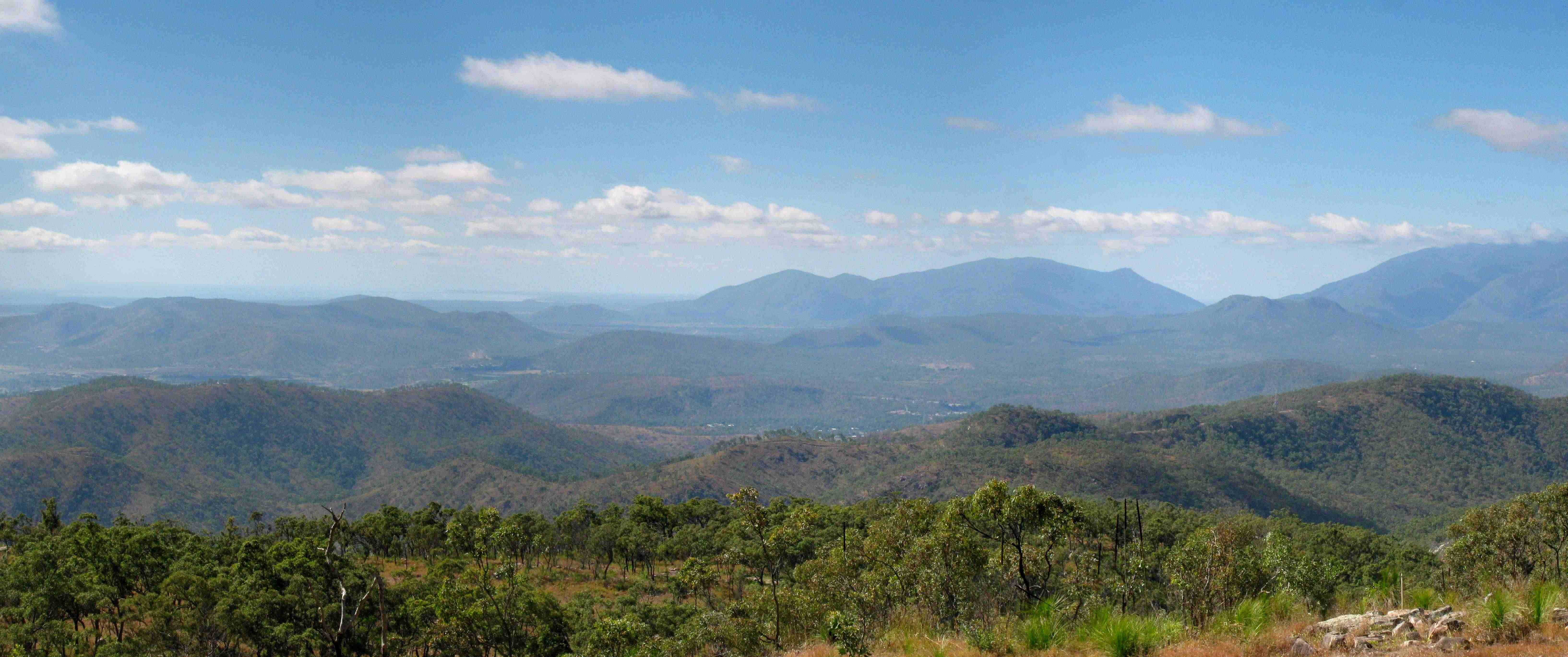
Hills of Bowling Green Bay National Park as seen from Mount Sutart, Townsville (© Vilis Nams)
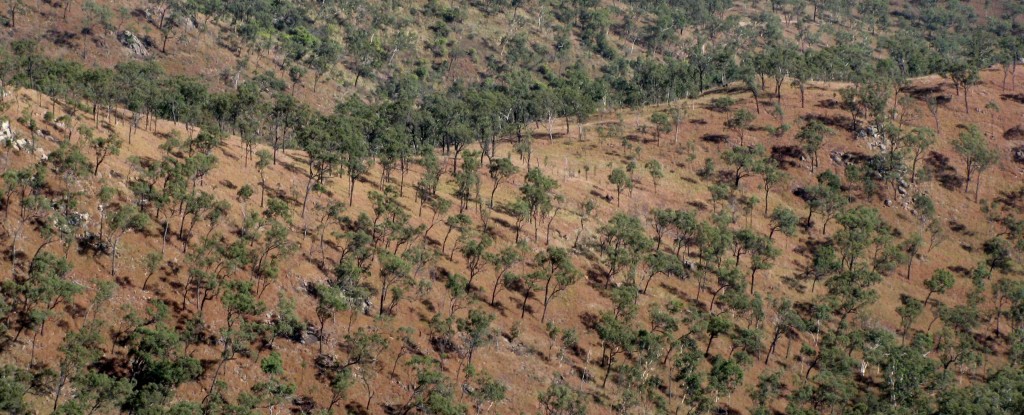
Drying Savannah on Mount Stuart, Townsville (© Vilis Nams)
In mid-morning, Vilis and I drove to Mount Stuart, that rearing rampart of pink, north-facing cliffs and steep slopes bristling with savannah woodland that forms an impressive backdrop for James Cook University and is a military training area all but off-limits to the public. Only the access road and its wide verges, plus the Rotary Lookout and small nature reserve at the summit, are available to those who, like us, come seeking views out over Townsville and the Ross and Bohle River floodplains.

View to east from Mount Stuart (© Vilis Nams)
Two Indian peafowl pecked at seeds or invertebrates among the gravelly soil near the lookout, and a brown goshawk glided below us, skirting the barren cliffs. Shrubs growing beyond the lookout railing, which in late January had blazed with orange or pink umbrellas of blossoms, now stood as dry skeletons. Haze hung over the city and floodplains interrupted by thrusting, rocky hills and ranges of hills we’ve bushwalked – Mount Louisa, Castle Hill, Herveys Range, Many Peaks Range, and offshore, Magnetic Island. The Commons wetland lay brown at the base of the Many Peaks Range, smeared with swirls of blue water and adjacent green vegetation.
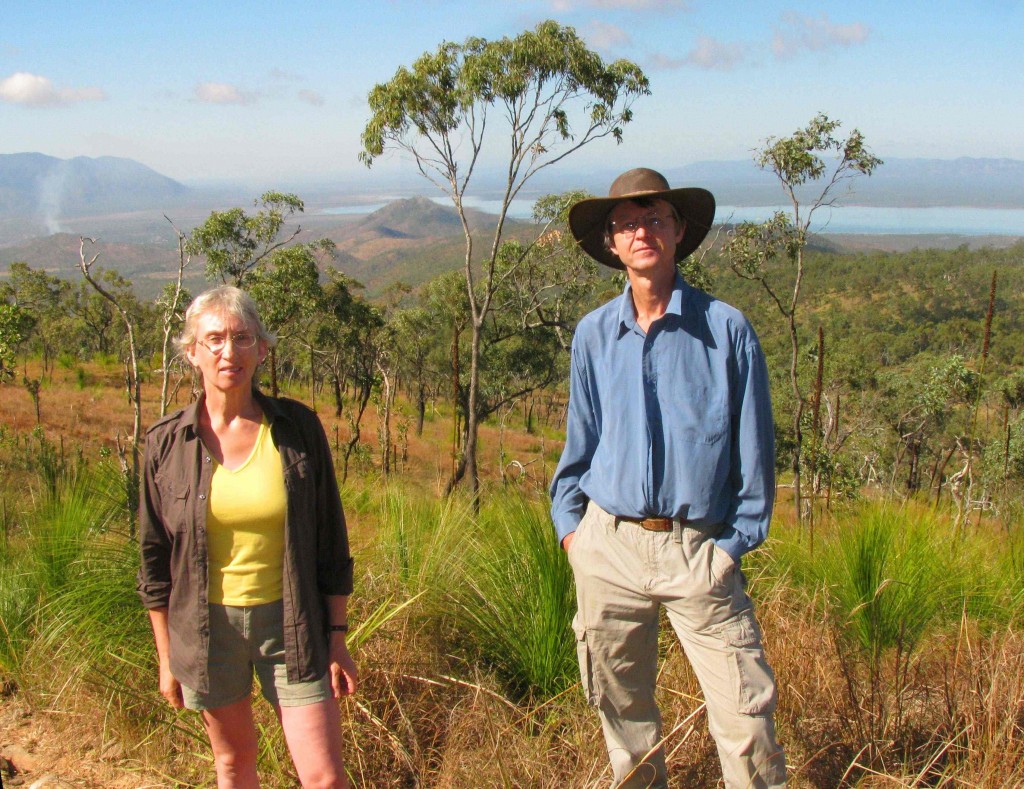
Here we are on Mount Stuart, with Ross Lake in background. Note green, curving leaves of grass trees. (© Vilis Nams)
Laughing kookaburras fussed in trees near the lookout, and a yellow-spotted honeyeater and yellow-bellied sunbird foraged for nectar. We strolled a loop track through the nature reserve, the leaves of grass trees vibrantly emerald in the otherwise brown and dried understory vegetation. To the south, Lake Ross formed a powder-blue expanse of water supply for Townsville, our view of it interrupted by the scrawny, twisted trunks of ironbarks. Off to the southeast, ranges of rolling hills culminated in the broad peak of Mount Elliot.
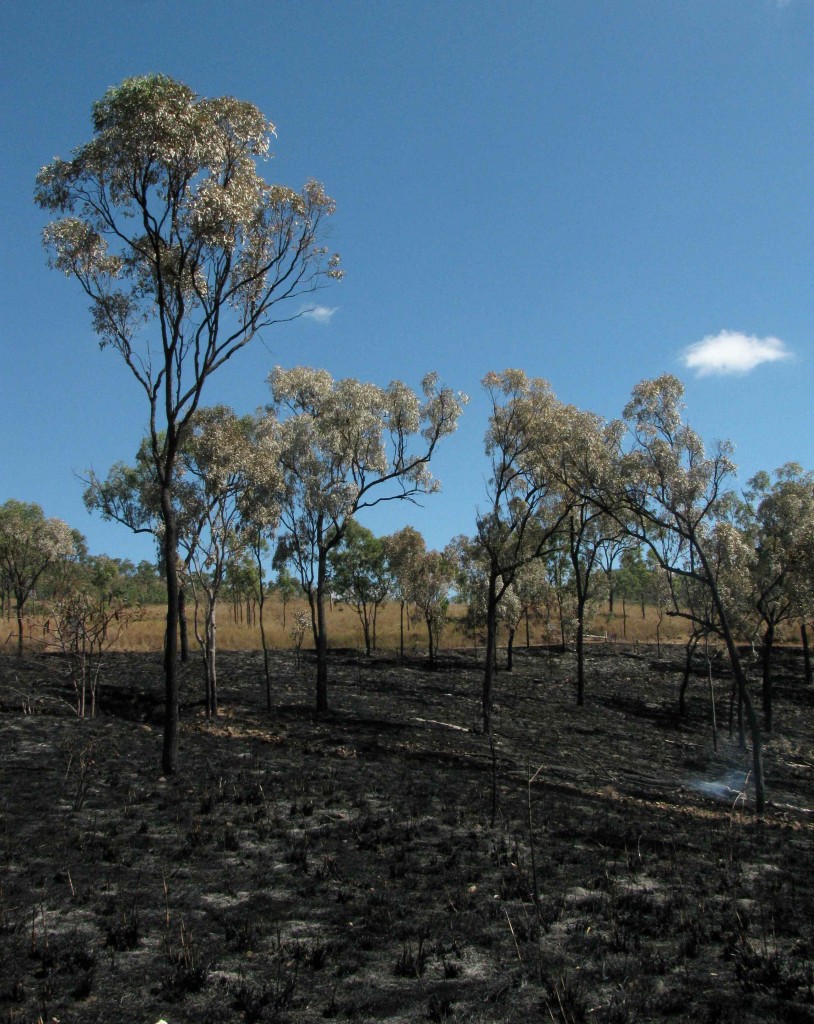
Prescribed Burn Site on Mount Stuart (© Magi Nams)
On our drive down the mountain, we paused at a site where a prescribed burn had blackened the ground, leaving granite boulders exposed and gum leaves tinged with red. Wisps of smoke still rose from the warm ground surface, where charred grasses crumbled beneath our shoes.
After leaving Mount Stuart, we drove south to the rural suburb of Oak Valley, hoping to find access to the eastern end of Ross Lake. We discovered that the Ross Lake Wildlife Sanctuary is off-limits to the public, but en route to the barricade, encountered a planned burn-off in progress, which was conducted by a local fire brigade.
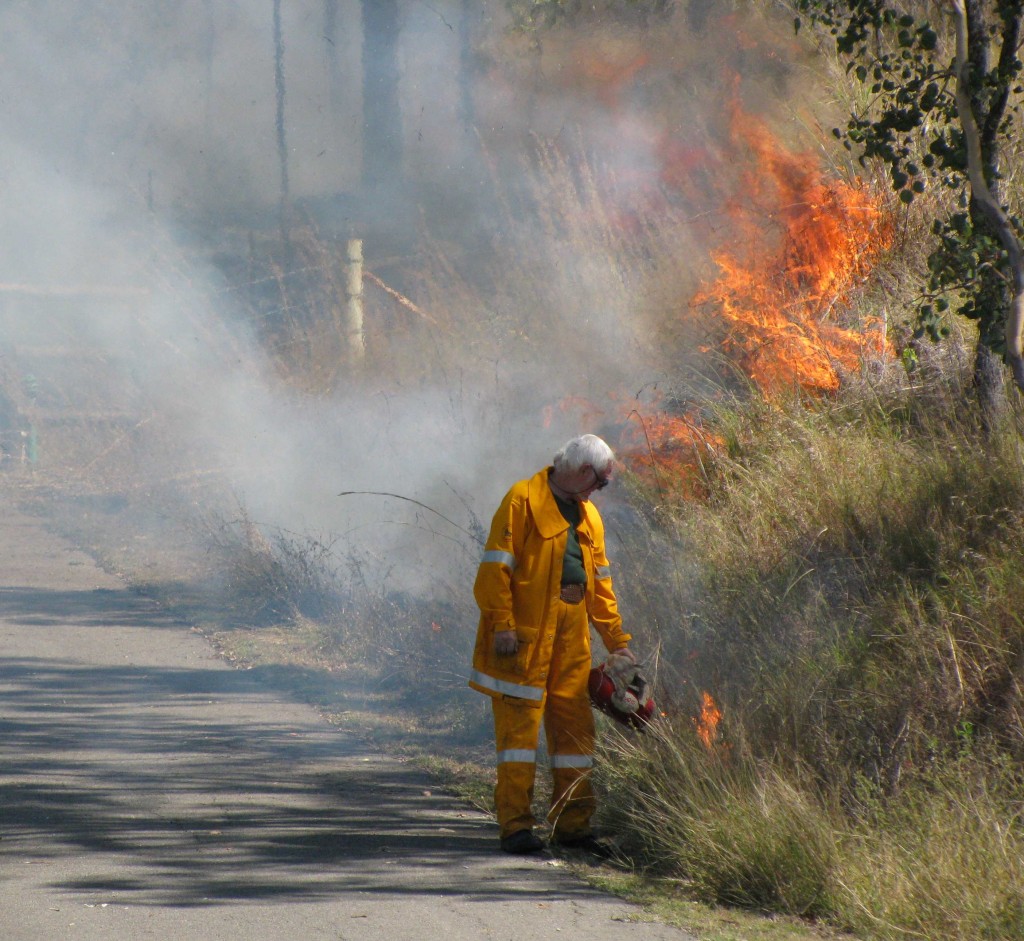
Prescribed Burn in Oak Valley (© Vilis Nams).
Flames leapt orange and high, feeding on grasses and shrubs that crackled and shrivelled in the firey onslaught. Greyish-yellow smoke billowed upward in dense clouds, its acrid smell borne on a light wind. Black kites swooped and wheeled through the smoke clouds, their fork-tailed bodies silhouetted against the fog of smoke. Others perched in scorched trees, and still others hunted on the charred, smoking ground. Vilis and I began counting them, first estimating 40 or 50, then, as we scanned the entire burn site, increasing that estimate to well over 100, perhaps 200. A pair of whistling kites and two Torresian crows briefly joined the swarming forktails, but the swirling flock of opportunistic hunters was utterly dominated by black kites. Neither Vilis nor I had ever seen anything like it. We speculated that the kites locate burn sites by the telltale evidence of smoke rising and then move in for the pickings.
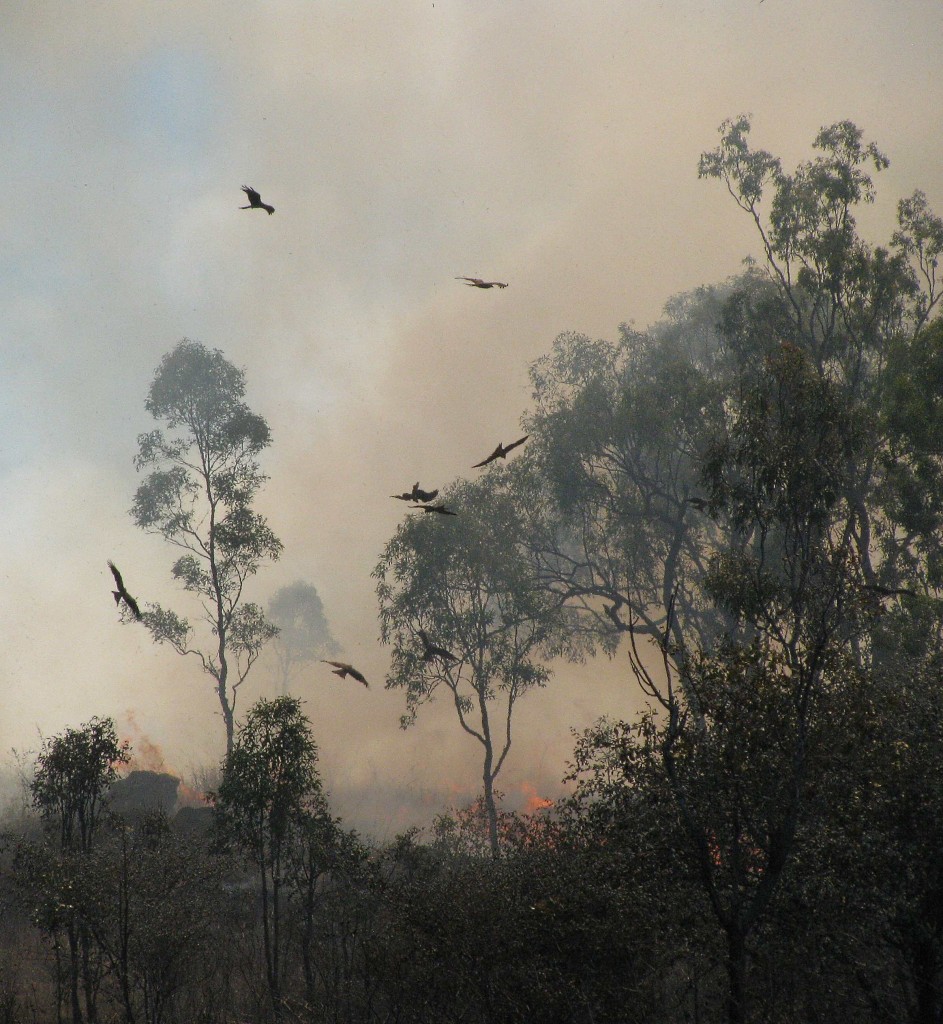
Black Kites at Oak Valley Burn-off (© Vilis Nams).
Today’s birds: *Indian peafowl, laughing kookaburras, yellow-spotted honeyeater, yellow-bellied sunbird, sulphur-crested cockatoos, black kites, whistling kites, Torresian crows, blue-faced honeyeater, peaceful dove, willie wagtail. (*denotes lifelist sighting in the wild)


